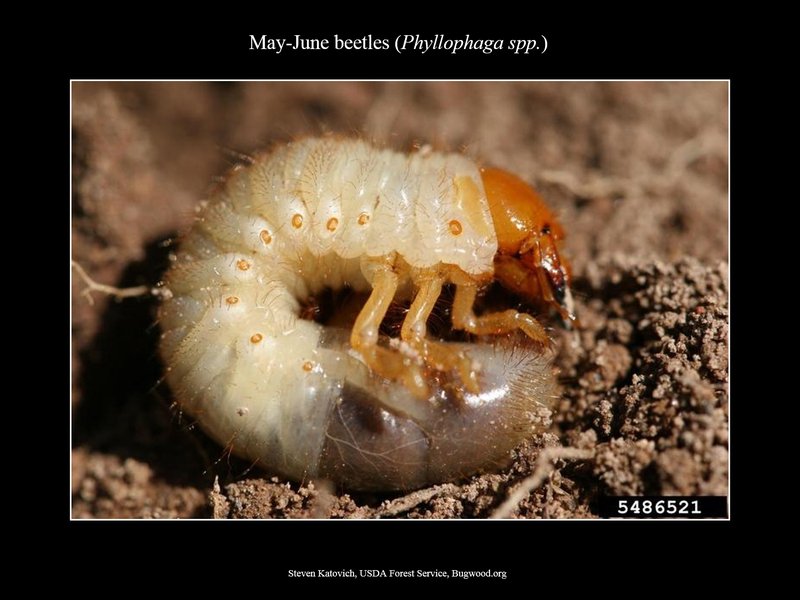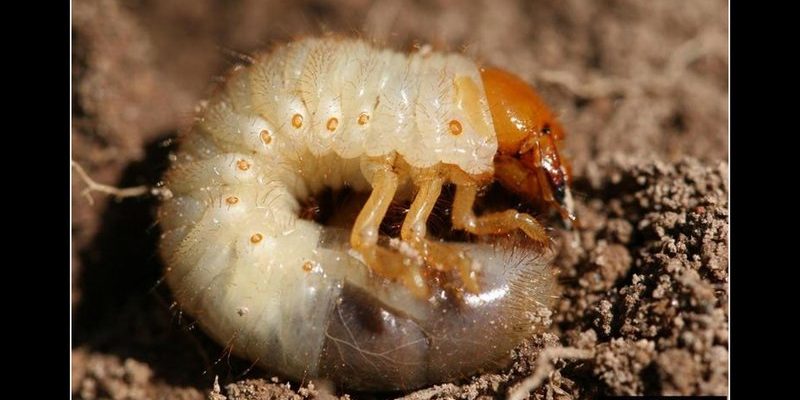
Grub worms are the larval stage of certain beetles and can be a real headache for lawn enthusiasts, as they feast on grass roots, leading to dead patches and an unsightly yard. On the flip side, lawn rollers may seem like a straightforward solution to leveling out your garden, but are they truly effective? Let me explain how these two aspects of lawn care interact and clarify some common misunderstandings.
What Are Grub Worms?
Let’s kick things off by getting to know our little friends—grub worms. These are typically white, C-shaped larvae that belong to beetles, such as Japanese beetles or June bugs. They thrive just below the surface of your lawn, munching on the roots of grass and other plants. Think of them as the tiny lawn invaders who throw a party in your yard, but they’re definitely not invited!
You might wonder how to identify a grub worm problem. One telltale sign is brown patches on your lawn. If you gently peel back the grass, you might find your not-so-friendly grubs chilling out under the soil. Typically, they thrive in warm weather, making late summer and early fall their prime time for wreaking havoc.
It’s important to note that while grub worms can be damaging, not all larvae are bad for your yard. Some are even beneficial, contributing to soil health. So, understanding the specific type of grub worm can help you determine if action is necessary.
Common Myths About Grub Worms
Now, let’s tackle some of the myths surrounding grub worms. One common misconception is that all lawn problems are due to them. While it’s true they can cause significant damage, other factors like disease or drought can contribute to a dying lawn as well. It’s crucial to take a closer look before jumping to conclusions.
Another myth is that simply applying chemical treatments will solve your grub issue. Sure, pesticides can help, but they’re not a magic bullet. Over-reliance on chemicals can disrupt beneficial insects and overall soil health. Instead, think about integrated pest management strategies, like introducing natural predators, to create a more balanced ecosystem in your yard.
Lastly, many homeowners believe that grub worms only appear in poorly maintained lawns. The reality is, even the lushest yards can suffer from these pesky critters. It often comes down to timing and environmental conditions, so don’t beat yourself up if you find them in your carefully tended lawn.
How Lawn Rollers Fit Into the Picture
So, where do lawn rollers come into play? You might think of them as a quick fix for leveling or compacting your lawn, making it look neat and tidy. These heavy, cylindrical tools roll over your grass to flatten out bumps and make the surface more even. It’s like giving your lawn a gentle massage, but it’s essential to know when and how to use one effectively.
Using a lawn roller can be beneficial if your lawn has been aerated or newly seeded. Rolling helps settle the soil around newly planted seeds, ensuring good contact with the soil for better germination. However, using it on an established lawn requires some caution. If your soil is already compacted, rolling can cause more harm than good, leading to water runoff and root suffocation.
Let’s also talk about when not to use a lawn roller. If your yard is soggy or overly wet, rolling it can result in damaging ruts and stress on the grass. Timing is everything, so always check soil moisture before getting rolling!
Myths About Lawn Rollers
You may have heard that lawn rollers are a cure-all for lawn issues. It’s tempting to think a simple rolling will make everything perfect, but that’s a myth! Overuse can lead to soil compaction, making it harder for roots to grow. Think of your lawn as a sponge; compacting it too much means it can’t absorb water and nutrients properly.
Another misconception is that all lawn rollers are created equal. You’ll find different types—some are filled with water, while others are solid. Each serves a purpose, and choosing the right one can make a significant difference in the results you achieve. A heavy roller works better on compacted soil, but a lighter one might suffice for just leveling bumps.
Lastly, there’s a belief that using a lawn roller is only necessary in spring or fall. However, the right timing can depend on factors like soil temperature, moisture levels, and the condition of your lawn. It’s best to consider your specific lawn needs, rather than sticking to a strict seasonal schedule.
Combining Grub Control And Lawn Rolling
So, how do grub worms and lawn rollers interact? Honestly, they don’t directly affect each other, but managing one can influence your approach to the other. If you’re dealing with a grub problem, using a lawn roller might not be your first course of action. Instead, focus on effective grub control methods, like applying nematodes or other organic solutions.
Once you’ve managed the grub situation and your lawn has started to recover, that’s when a lawn roller can come into play. It can help flatten any bumps or dead spots that were left behind due to the grub damage. Just be sure to wait until your lawn is actively growing and healthy enough to handle the rolling.
It’s all about timing and understanding how these two elements can work in harmony for a healthier lawn. This strategy not only addresses the current issues, but it also helps prevent future problems.
Best Practices for Lawn Care
If you’re invested in maintaining a healthy lawn, here are some best practices to keep in mind:
- Regular Monitoring: Keep an eye on your lawn for signs of grub worms or other issues. Early detection is key!
- Proper Watering: Ensure you’re watering your lawn adequately. Deep watering encourages stronger roots and helps combat potential damage from grubs.
- Responsible Lawn Rolling: Use your lawn roller wisely. It can be helpful, but don’t overdo it. Roll only when the soil is adequately moist for best results.
- Natural Pest Control: Consider environmentally friendly options to manage critters, such as beneficial nematodes that target grub worms without harming other garden life.
Taking these steps can make a world of difference. Just like any good relationship, healthy lawn care requires attention, communication, and a bit of understanding.
Wrapping It All Up
Understanding the dynamics between grub worms and lawn rollers can feel like piecing together a puzzle. It’s easy to get caught up in myths, but the truth is that both can have a significant impact on your lawn. By debunking these misconceptions and applying best practices, you set yourself up for success.
So, the next time you venture into your yard and feel that squishy ground beneath your feet, remember that knowledge is power. With a clear understanding of grub worms and lawn rollers, you’ll be ready to tackle any lawn care challenge that comes your way. Happy gardening!

